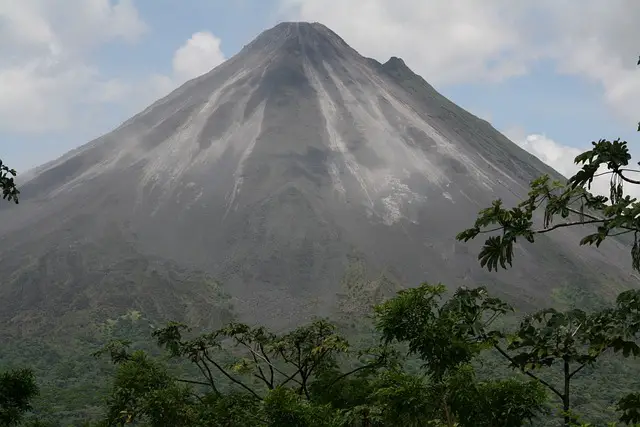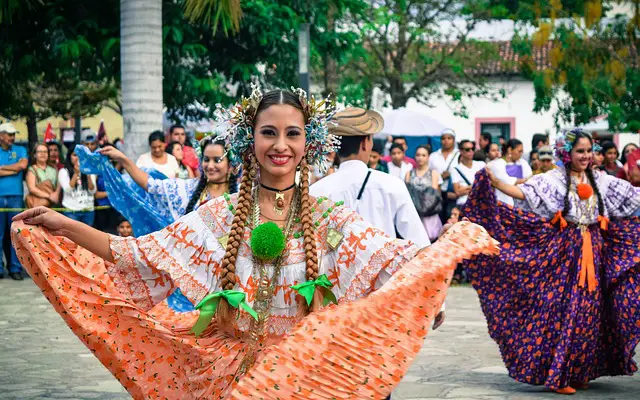Nestled in the heart of Central America, Costa Rica is a traveler’s paradise. With its lush rainforests, stunning beaches, and diverse wildlife, this small yet enchanting country offers a multitude of experiences for all types of travelers. Whether you’re an adventure seeker, a nature enthusiast, or simply seeking relaxation, Costa Rica has something to offer. In this comprehensive guide, we will explore everything you need to know about traveling in Costa Rica, from planning your trip to exploring its diverse landscapes and enjoying the local culture.
Table of Contents
Planning Your Trip
Visa Requirements
Best Time to Visit
Packing Essentials
Vaccinations and Health Precautions
Budgeting for Your Trip
Getting There and Getting Around
Air Travel
Ground Transportation
Renting a Car
Public Transportation
Accommodations
Hotels and Resorts
Eco-Lodges and Boutique Hotels
Hostels and Guesthouses
Camping in Costa Rica
Exploring Costa Rica’s Diverse Regions
Central Valley
Pacific Coast
Caribbean Coast
Northern Plains
Arenal and Monteverde
Guanacaste and Nicoya Peninsula
Osa Peninsula and Corcovado
Tortuguero and the Canals
Activities and Attractions
Beaches and Water Activities
Hiking and Nature Trails
Wildlife Watching
Adventure Sports
Cultural Experiences
Cuisine and Dining
Traditional Costa Rican Dishes
Dining Etiquette
Street Food and Markets
Must-Try Beverages
Safety and Health
Staying Safe in Costa Rica
Common Health Concerns
Emergency Contacts
Responsible Travel and Conservation
Eco-Tourism in Costa Rica
Protecting the Environment
Supporting Local Communities
Conclusion
Embracing the Pura Vida Lifestyle

Tips for a Memorable Trip
Planning Your Trip
Before you embark on your Costa Rican adventure, it’s essential to plan accordingly. Here are some crucial factors to consider:
Visa Requirements: Citizens from many countries, including the United States and most European nations, can visit Costa Rica for up to 90 days without a visa. However, always check the latest requirements and regulations with your local embassy or consulate.
Best Time to Visit: Costa Rica’s weather varies by region, so the best time to visit depends on your preferences. The dry season (December to April) is ideal for outdoor activities, while the wet season (May to November) offers lush green landscapes and fewer crowds.
Packing Essentials: Don’t forget essentials like sunscreen, insect repellent, comfortable clothing, and a good pair of hiking shoes. Costa Rica’s climate can vary, so pack accordingly.
Vaccinations and Health Precautions: Check with your healthcare provider for recommended vaccinations, and consider purchasing travel insurance that covers medical emergencies.
Budgeting for Your Trip: Costa Rica can be expensive, but it’s possible to travel on a budget. Plan your expenses for accommodation, food, transportation, and activities accordingly.
Getting There and Getting Around
Air Travel: Most international travelers arrive at Juan Santamaría International Airport in San José or Daniel Oduber Quirós International Airport in Liberia. Domestic flights are available to reach other regions quickly.
Ground Transportation: Buses are a common mode of transportation, especially for budget travelers. They cover most of the country, and it’s an affordable way to get around.
Renting a Car: If you prefer flexibility and convenience, renting a car is an excellent option. Be prepared for varying road conditions and driving challenges.
Public Transportation: Trains and ferries are also available, particularly for longer journeys between regions. It’s a scenic way to explore the country.
Accommodations
Costa Rica offers a wide range of accommodation options to suit different preferences and budgets:
Hotels and Resorts: From luxury resorts to mid-range hotels, you’ll find various options, especially in popular tourist destinations.
Eco-Lodges and Boutique Hotels: For a unique and environmentally conscious experience, consider staying in eco-lodges and boutique hotels, which often blend with the natural surroundings.
Hostels and Guesthouses: Budget travelers can opt for hostels and guesthouses, which are prevalent in tourist areas and provide a more affordable stay.
Camping in Costa Rica: If you’re an adventurous traveler, camping is an option in some national parks and reserves. Make sure to check park regulations and permits.

Exploring Costa Rica’s Diverse Regions
Costa Rica’s geographical diversity means you can experience various ecosystems and landscapes in a relatively small area. Here’s an overview of some must-visit regions:
Central Valley: Home to the capital city, San José, and the Juan Santamaría International Airport, this region offers a blend of urban culture and nearby natural attractions like Poás Volcano.
Pacific Coast: Famous for its stunning beaches and popular tourist destinations like Manuel Antonio National Park and Jacó, the Pacific Coast is a haven for surfers, sun-seekers, and nature enthusiasts.
Caribbean Coast: Known for its distinct Afro-Caribbean culture, this region offers a unique experience. Explore the vibrant town of Puerto Viejo and visit Tortuguero for turtle nesting season.
Northern Plains: Visit the Arenal Volcano, La Fortuna, and hot springs in this region, known for its volcanic activity and lush rainforests.
Arenal and Monteverde: Experience cloud forests, hanging bridges, and the iconic Monteverde Cloud Forest Biological Reserve.
Guanacaste and Nicoya Peninsula: Known for its dry climate and beautiful beaches, this region is perfect for relaxation and water activities.
Osa Peninsula and Corcovado: Explore one of the most biodiverse regions on the planet, with untouched rainforests and abundant wildlife.
Tortuguero and the Canals: Accessible only by boat or plane, Tortuguero is famous for its canals, nesting turtles, and remote beauty.
Activities and Attractions
Costa Rica offers a wide range of activities and attractions to cater to all interests:
Beaches and Water Activities: Snorkeling, scuba diving, surfing, and sunbathing are popular along the country’s extensive coastline.
Hiking and Nature Trails: Explore lush rainforests, cloud forests, and national parks on well-maintained hiking trails.
Wildlife Watching: Costa Rica is home to a vast array of wildlife, including sloths, monkeys, toucans, and jaguars. Consider a guided wildlife tour.
Adventure Sports: From zip-lining through the canopy to white-water rafting, there are plenty of adventurous activities to enjoy.
Cultural Experiences: Visit local markets, attend traditional festivals, and immerse yourself in the warm culture of Costa Rica.
Cuisine and Dining
Costa Rican cuisine reflects the country’s diverse culture and agricultural abundance. Don’t miss these culinary experiences:
Traditional Costa Rican Dishes: Sample gallo pinto (rice and beans), casado (a typical lunch dish), ceviche, and a variety of tropical fruits.
Dining Etiquette: Tipping is customary, and it’s customary to say “buen provecho” (enjoy your meal) before eating.
Street Food and Markets: Try street food like empanadas, tamales, and fresh coconut water from local vendors and markets.
Must-Try Beverages: Enjoy Costa Rican coffee, tropical fruit juices, and the national alcoholic drink, guaro.
Safety and Health
Costa Rica is considered one of the safer countries in Central America, but it’s essential to stay vigilant and take precautions:
Staying Safe in Costa Rica: Be aware of your surroundings, avoid displaying valuables, and follow local advice.
Common Health Concerns: Protect yourself from mosquito-borne illnesses like dengue and Zika by using repellent and wearing appropriate clothing. Be cautious with tap water; it’s best to drink bottled water.
Emergency Contacts: Familiarize yourself with emergency numbers and the location of the nearest medical facilities.

Responsible Travel and Conservation
Costa Rica takes pride in its commitment to eco-tourism and conservation. As a responsible traveler, you can contribute to these efforts:
Eco-Tourism in Costa Rica: Support eco-friendly lodges and tour operators that prioritize sustainability and environmental protection.
Protecting the Environment: Follow Leave No Trace principles, stay on designated trails, and respect wildlife. Avoid purchasing products made from endangered species.
Supporting Local Communities: Choose to buy locally-made souvenirs and support local businesses to benefit the communities you visit.
Traveling in Costa Rica is a truly enriching experience, offering a blend of natural beauty, adventure, and cultural immersion. By planning your trip carefully, respecting the environment and local culture, and embracing the Pura Vida lifestyle, you can create unforgettable memories and leave a positive impact on this remarkable destination. Whether you seek relaxation on pristine beaches, exploration in lush rainforests, or a mix of both, Costa Rica has something magical to offer every traveler. So, pack your bags, embrace the spirit of adventure, and get ready to embark on an incredible journey through this captivating country. Pura Vida!
Additional Tips for a Memorable Trip
To ensure your trip to Costa Rica is truly unforgettable, here are some additional tips and recommendations:
Learn Basic Spanish: While many Costa Ricans in the tourism industry speak English, learning some basic Spanish phrases can enhance your experience and help you communicate with locals.
Reserve in Advance: If you plan to visit popular national parks or participate in specific tours, it’s advisable to make reservations in advance, especially during the high season.
Pack Light: Given the warm climate and casual atmosphere, you can get away with packing light. Keep in mind that you may need to carry your luggage over uneven terrain in some locations.
Stay Flexible: While planning is essential, leaving room for spontaneity can lead to unexpected discoveries and adventures. Embrace the laid-back Pura Vida lifestyle.
Travel Responsibly: Reduce your ecological footprint by minimizing plastic waste, conserving water and energy, and supporting businesses that prioritize sustainability.
Stay Informed: Keep updated on local news and weather forecasts, especially if you plan to visit during the rainy season when road conditions may change rapidly.
Respect Wildlife: When observing animals, maintain a safe distance, and never feed or touch them. It’s crucial to protect their natural behaviors and habitats.
Take Your Time: Costa Rica’s natural beauty and cultural richness are best enjoyed at a relaxed pace. Don’t rush from one attraction to another; take the time to savor each experience fully.
Connect with Locals: Engage with locals and learn about their way of life. Costa Ricans are known for their warm hospitality and are often willing to share their traditions and stories.
Travel Insurance: Consider purchasing comprehensive travel insurance that covers trip cancellations, medical emergencies, and unexpected events.
Costa Rica is a country of unparalleled beauty and biodiversity. Whether you’re exploring its lush rainforests, relaxing on its pristine beaches, or immersing yourself in its rich culture, Costa Rica offers a wealth of experiences for every traveler. By planning your trip carefully, respecting the environment and local communities, and embracing the Pura Vida spirit, you can create memories that will last a lifetime.
As you journey through this captivating country, remember that Costa Rica’s natural wonders and warm-hearted people are treasures to be cherished. By treading lightly, leaving a positive impact, and fully embracing the Pura Vida lifestyle, you can ensure that your travel in Costa Rica is not only memorable but also meaningful. So, pack your bags, embark on your adventure, and let the enchantment of Costa Rica capture your heart and soul.







